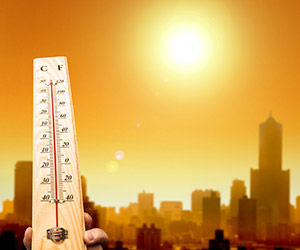New York: The month of July has been marked as the world’s hottest month ever recorded, and it remains very likely that 2021 will rank among the 10-warmest years on record, new data has revealed.
According to new global data released by the US National Oceanic and Atmospheric Administration (NOAA), extreme heat is also a reflection of the long-term changes outlined in a major report released this week by the Intergovernmental Panel on Climate Change (IPCC).
“In this case, first place is the worst place to be. July is typically the world’s warmest month of the year, but July 2021 outdid itself as the hottest July and month ever recorded,” said NOAA Administrator Rick Spinrad.
“This new record adds to the disturbing and disruptive path that climate change has set for the globe,” he said in a statement late Friday.
The combined land and ocean-surface temperature was 1.67 degrees Fahrenheit (0.93 of a degree Celsius) above the 20th-century average of 60.4 degrees F (15.8 degrees Celsius), making it the hottest July since records began 142 years ago.
It was 0.02 of a degree Fahrenheit (0.01 of a degree C) higher than the previous record set in July 2016, which was then tied in 2019 and 2020.
The land-surface only temperature was the highest ever recorded for July, at an unprecedented 2.77 degrees Fahrenheit (1.54 degrees Celsius) above average, surpassing the previous record set in 2012.
Asia had its hottest July on record, besting the previous record set in 2010.
“Scientists from across the globe delivered the most up-to-date assessment of the ways in which the climate is changing,” Spinrad said.
“It is a sobering IPCC report that finds that human influence is, unequivocally, causing climate change, and it confirms the impacts are widespread and rapidly intensifying.”
The IPCC report had provided estimates of the chances of crossing the global warming level of 1.5 degree Celsius in the next decades, and finds that unless there are immediate, rapid, and large-scale reductions in greenhouse gas emissions, limiting warming to close to 1.5 degree Celsius or even 2 degree Celsius will be beyond reach.
